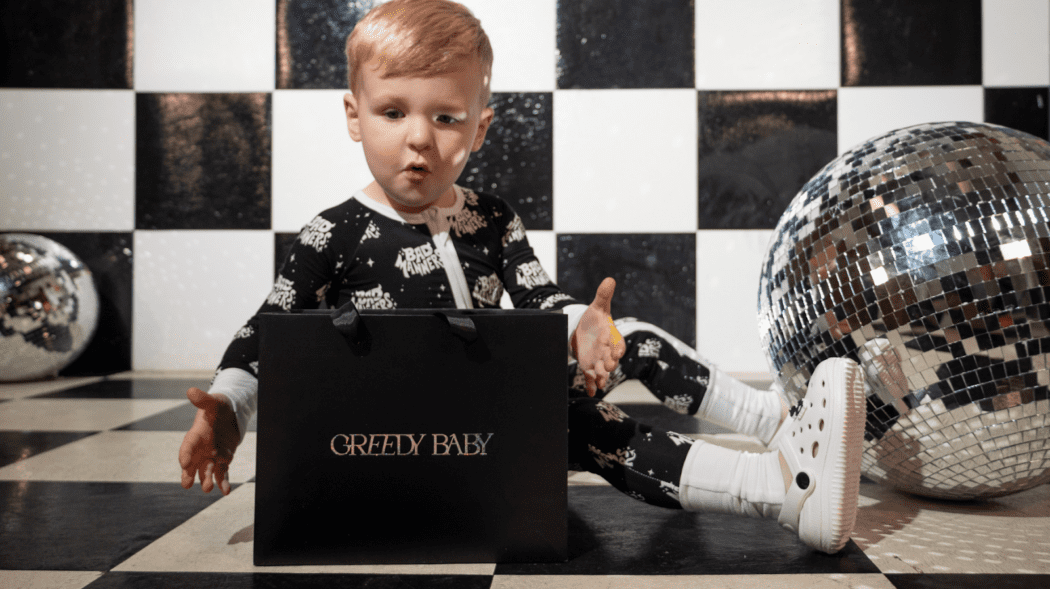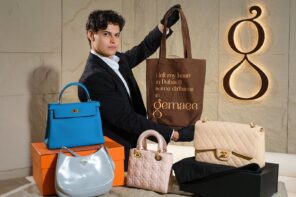Baby and children’s fashion typically uses materials like cotton and polyester, but bamboo fabric is gaining momentum. Consumers now prioritize eco-consciousness, pushing brands to advance and meet this demand while maintaining comfort and style. Emilie Bair founded Greedy Baby to embrace this shift, using bamboo fabric in her designs. This story goes beyond sustainability; it’s about redefining the potential of baby clothing.
Bamboo: A Fresh Take on Baby Fashion
Emilie Bair had a clear aim when she started Greedy Baby in 2023. She wanted to offer high-quality, sustainable, and visually distinct baby clothing. “There were plenty of organic options,” Bair says, “But none truly sparked my interest. Most baby clothes felt either boring or overly trendy without substance.” Bair chose bamboo fabric for its eco-friendly nature and superior comfort.
Baby fashion has embraced bamboo due to its fast growth, low water requirements, and hypoallergenic qualities. It provides softness, breathability, and durability in baby clothing, which makes it suitable for sensitive skin. “I wanted parents to trust that these clothes were soft, ethical, and built to last,” Bair explains.
Sustainability is becoming a key concern for many. The U.S. baby clothing market exceeded $11 billion in 2023, with eco-friendly products playing a growing role. Experts predict that demand for sustainable baby products will rise by 5.4% each year through 2030. Greedy Baby’s decision to use bamboo reflects this broader consumer shift toward environmentally friendly options.
Turning Baby Clothes into a Statement
Sustainability is important to Greedy Baby, but its distinctive look also helps it stand out. Bair, who has a strong interest in fashion, wanted to create distinctive designs.
“It wasn’t enough for the clothes to feel comfortable,” she explains. I wanted them to have a unique look.” From the outset, the company featured vibrant colors and bold patterns, avoiding the muted tones often seen in baby clothing.
One unexpected hit has been the brand’s graphic T-shirts, which have outsold the pajama sets. “I didn’t expect it,” Bair admits. “I thought parents would go for practical sleepwear, but they’re more interested in the eye-catching T-shirts.” These designs reflect Bair’s idea that baby clothes can be both fun and practical.
Its ability to blend bold designs with functionality makes the company different. Parents are looking for clothes that allow their children to express their individuality, even at a young age. “There’s no reason for baby clothes to be boring,” Bair says. “Babies represent fresh beginnings, so their clothing should reflect that energy.”
Sustainable Shift and What’s Next
Bair faced several challenges when focusing on bamboo. Making clothes from sustainable materials like bamboo brings higher costs and limited access to specific machinery. Despite these obstacles, Bair stayed focused on building a brand that parents can trust for quality and ethics. “It’s not just about making clothes,” she says. “It’s about creating something that parents feel good about.”
Greedy Baby is looking to broaden its focus beyond bamboo fabrics. In 2024, Bair plans to introduce a gender-neutral line, following the rising interest in inclusivity within children’s fashion.
This move reflects the brand’s desire to engage in discussions about identity and expression. More parents are now searching for brands that provide eco-friendly products, quality, and style. The brand’s use of bamboo materials and contemporary designs helps it remain competitive in the baby fashion industry.
How Greedy Baby Brings Meaning to Baby Fashion
Greedy Baby has a clear mission: to create products that are meaningful and built to last. “It’s about more than just clothing,” Bair explains. “It’s about giving parents the option to dress their kids in a way that reflects their values.”
While the brand grows, Bair remains focused on the larger purpose. “We’re not just selling clothes,” she says. “We want to leave a lasting mark on the industry and change how people think about baby clothing.”
The company offers an alternative for parents looking for sustainable and transparent fashion. The brand’s focus on ethical practices shows that baby clothing can be both responsible and high-quality, encouraging the idea that fashion starts with the youngest generation.





